Spire smart pebble watches your breathing and mental health
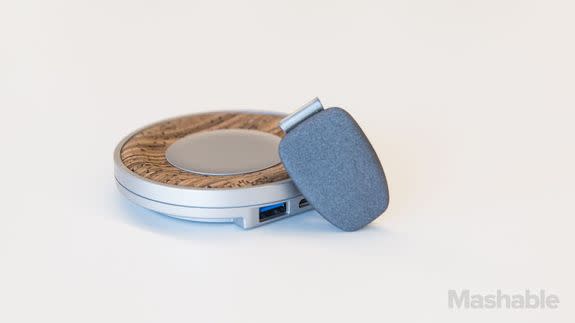
I don’t like to think about breathing. It’s a job for my subconscious mind, and the more I’m conscious of it, the more I become concerned that I will stop breathing entirely. (I have a touch of sleep apnea, so this is not out of the question.) Which is why I was more than a little skeptical of Spire, the new health and fitness gadget and companion app. It wants to tell me all about my breathing: how often I do it, how well I do it and when I don’t do it.
I think I just held my breath the whole time I wrote that sentence.
SEE ALSO: Pal adds GPS and battery life to your Pebble, but also a lot of bulk
An attractive, $129 mindfulness and activity tracker, Spire looks nothing like any health gadget I’ve seen before. It’s resembles a small, gray rock and instead of sitting on your wrist, you clip Spire onto your waist band or bra and make sure the Spire pebble, which is about an inch in diameter and a half-inch thick, is facing in, resting gently against your skin or the waistband of your underwear. I thought this would be uncomfortable, but I soon forgot I was even wearing it.
As I’m writing this, my breathing rate has jumped to 25 breaths per minute. Do always pant when I write?
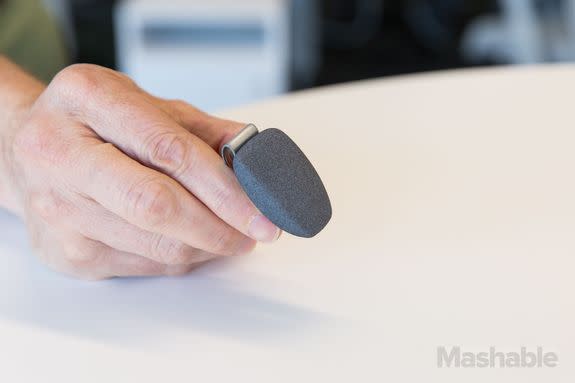
Image: BRITTANY HERBERT /MASHABLE
However, before you put Spire on, you have to charge it on its circular, cork-accented, wireless charging base and then connect it to your phone and the Spire app via Bluetooth Low Energy. Spire vibrates when it’s connected and sometimes to let you know when you’re not breathing.
Whoops, just held my breath again.
The app set-up asks you the usual questions about your gender and weight.
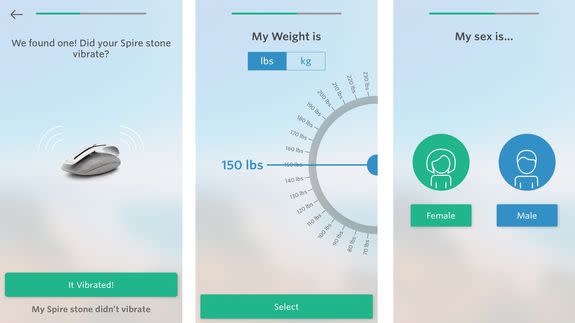
Image: Spire
Once the set-up is done and you’re wearing the Spire, the screen greets you with a live breathing wave. You can watch in real time as you breathe in and out. The app is watching for what Spire calls “streaks": 17 breaths per minute (BPM) is considered calm, slower than average, while 21 BPM might indicate that you’re tense. Focus streaks indicate a more consistent, but still above average breathing pattern.
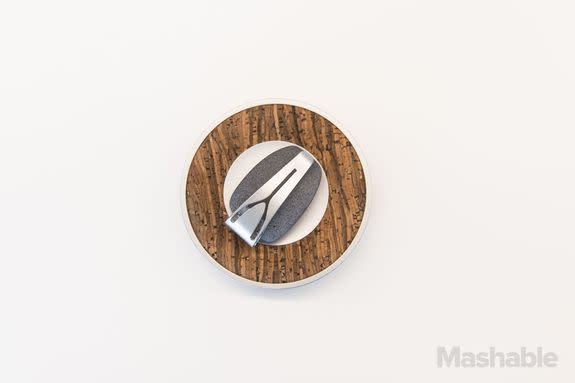
Image: BRITTANY HERBERT /MASHABLE
If Spire senses through your breathing patterns that you’re tense, it will ask you to engage in a calming exercise.
Oh, look, I’m tense right now. Spire wants me to engage in some calm breathing activities, but I can’t because I’m writing this review.
What stresses you out
If you let it, Spire can integrate location data, photos and even your calendar to show you when, where and maybe why your breathing patterns changed. I noticed that during the time I was running my wife’s birthday party that I was stress-breathing for a good chunk of the day. Breathing data can also be shared with Apple’s Health App. Spire, by the way, arrives just a few short months before the launch of Apple’s Breathe App for Apple watchOS 3.0. It helps you manage stress through breathing exercises, but does not actually track breathing.
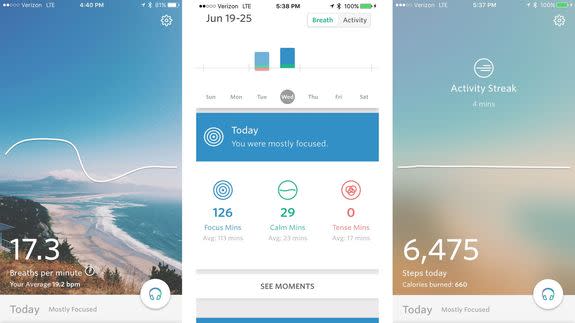
Image: spire
Like other mindfulness apps, Spire also includes pre-recorded guidance sessions intended to calm you down, increase focus, reduce tension, and meditate. It’s interesting to listen to one of the sessions while watching your live breathing pattern. I would like to say that it helped me breath better or smarter, but the more I listened while watching my breathing, the more I just thought about the act of breathing.
One bit of good news: I finally slowed by breathing down to a very calm 11.8 breaths per min … oh, wait, it says it can’t see my breathing at all. Am I dead? Never mind, I’m back to 21.4 breathes per minute.
Spire watches for your breathing patterns so it can more accurately access when you’re breathing faster or slower than your norm. However, it’s also fair to say that Spire’s BPM tracking and assignment of mental states is guess work. Yes, it can see the BPMs and overall breathing pattern, but it can’t really know your state of mind. It’s intuiting it. On the other hand, it did seem to know when I was a little stressed or, as it often said, focused.
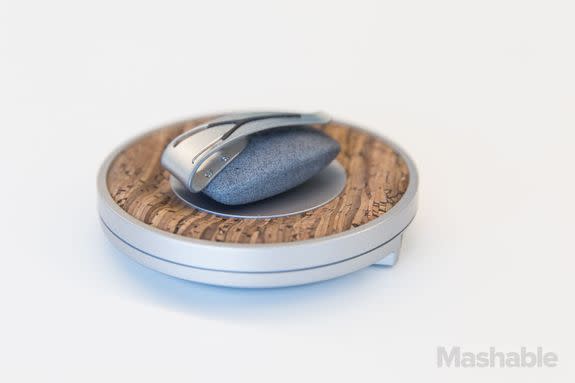
Image: BRITTANY HERBERT /MASHABLE
Spire is intended to be worn all day, but not at night. That’s a shame since nighttime is when I really need to track my breathing. I tried to wear it consistently as possible, switching it from one pair of pants to another (it runs for a full week on one charge). However, I eventually forgot about it and it ended up in the wash, which is actually not a problem. The Spire is waterproof.
Spire also has built in motion tracking, so you also get credit for steps and general activity. Still, it’s the breathing that matters here.
If the Spire has one issue, it's battery consumption, not on the device itself, but on the iPhone, where the Spire app's non-stop breathing tracking made it the number one battery hog on my iPhone 6. At one point, it accounted for 17% of battery consumption.
Spire may not be for someone as neurotic as me, but, if they can get the iPhone battery consumption issue under control, anyone who wants a little help chilling out and focusing, might appreciate Spire’s low-key, non-invasive approach.
Spire: Mindfulness + Activity Tracker
The Good
Attractive • Easy Set-up • Waterproof • Accurate tracking
The Bad
No nighttime tracking • Could be cheaper • Smartphone battery-life consumption
The Bottom Line
Breathing right might be the path to calm and Spire could be the vehicle to get you there.
